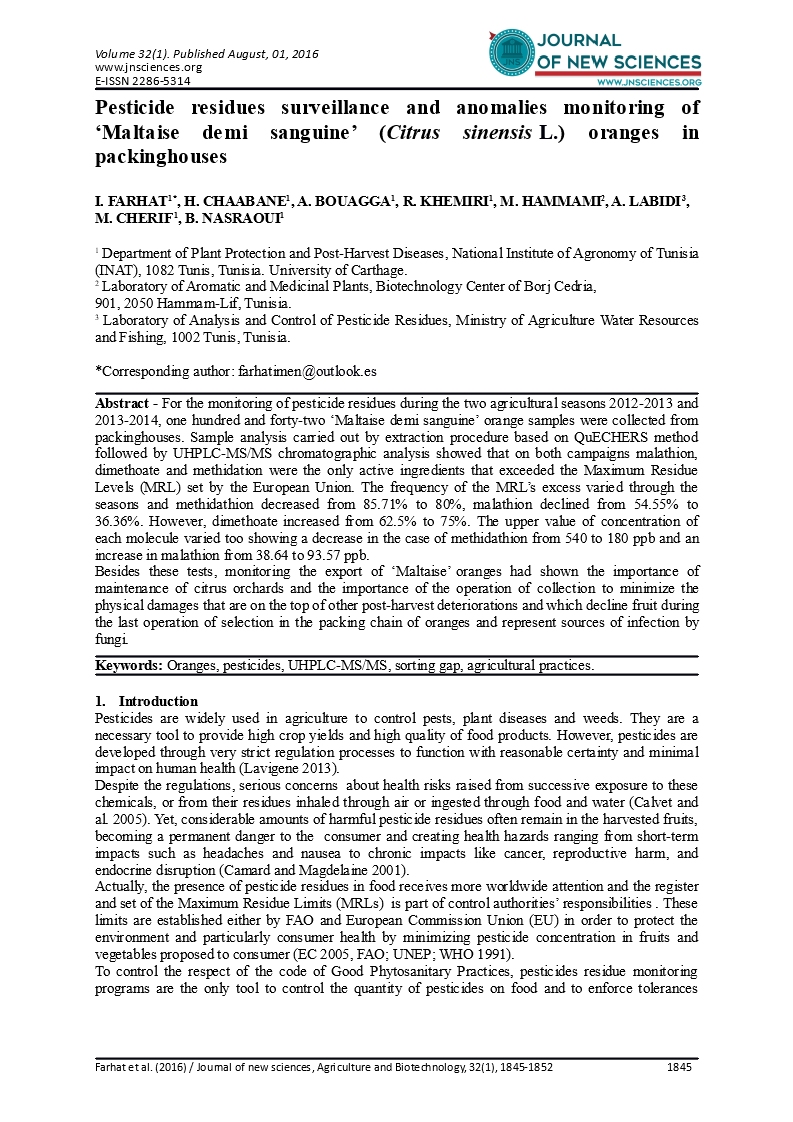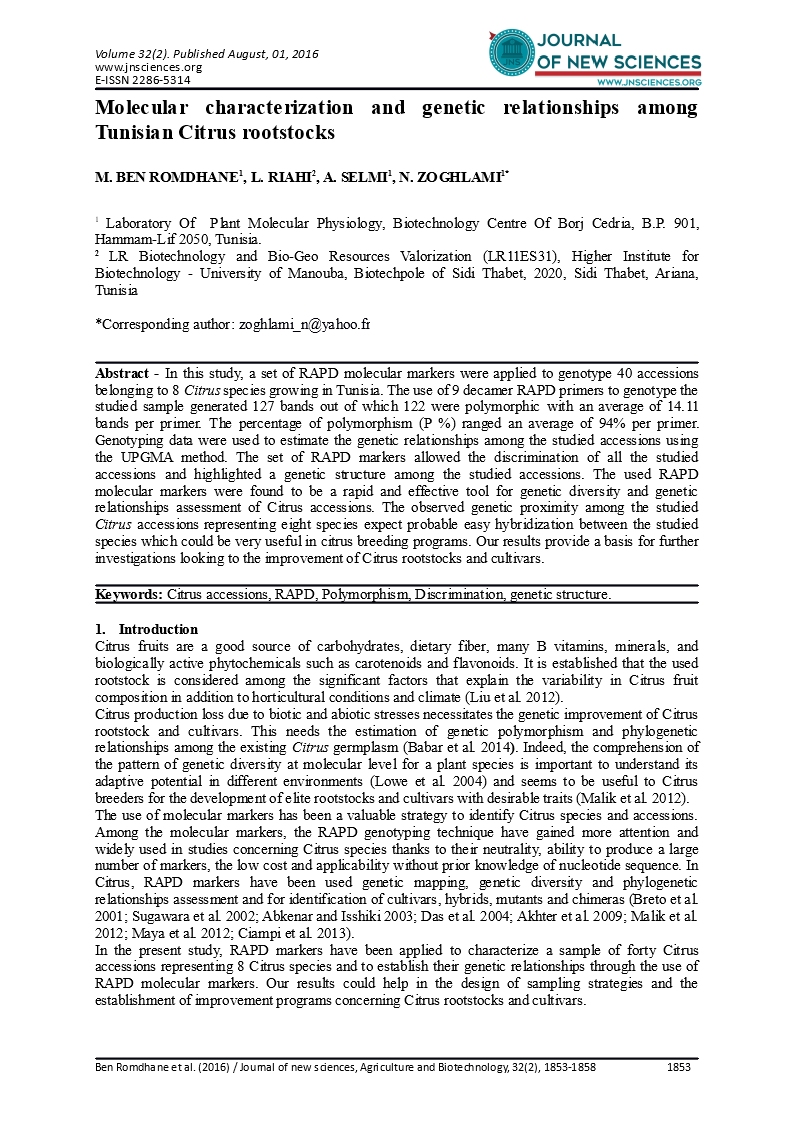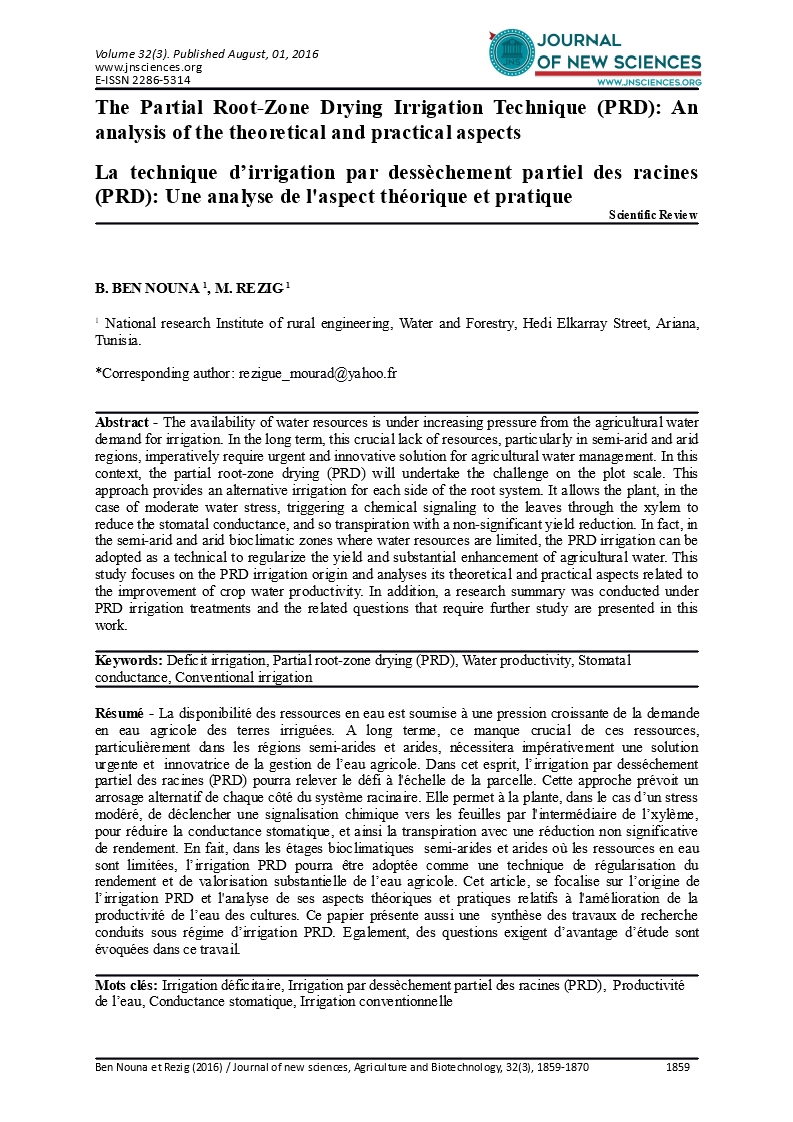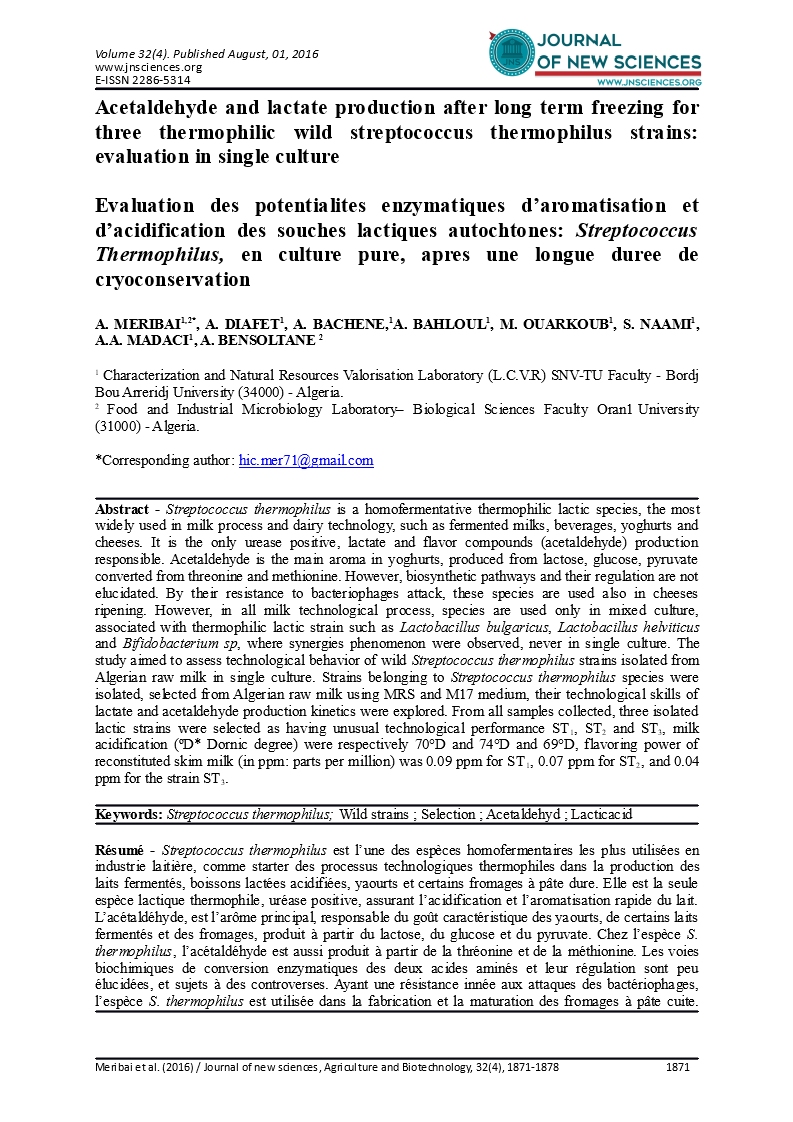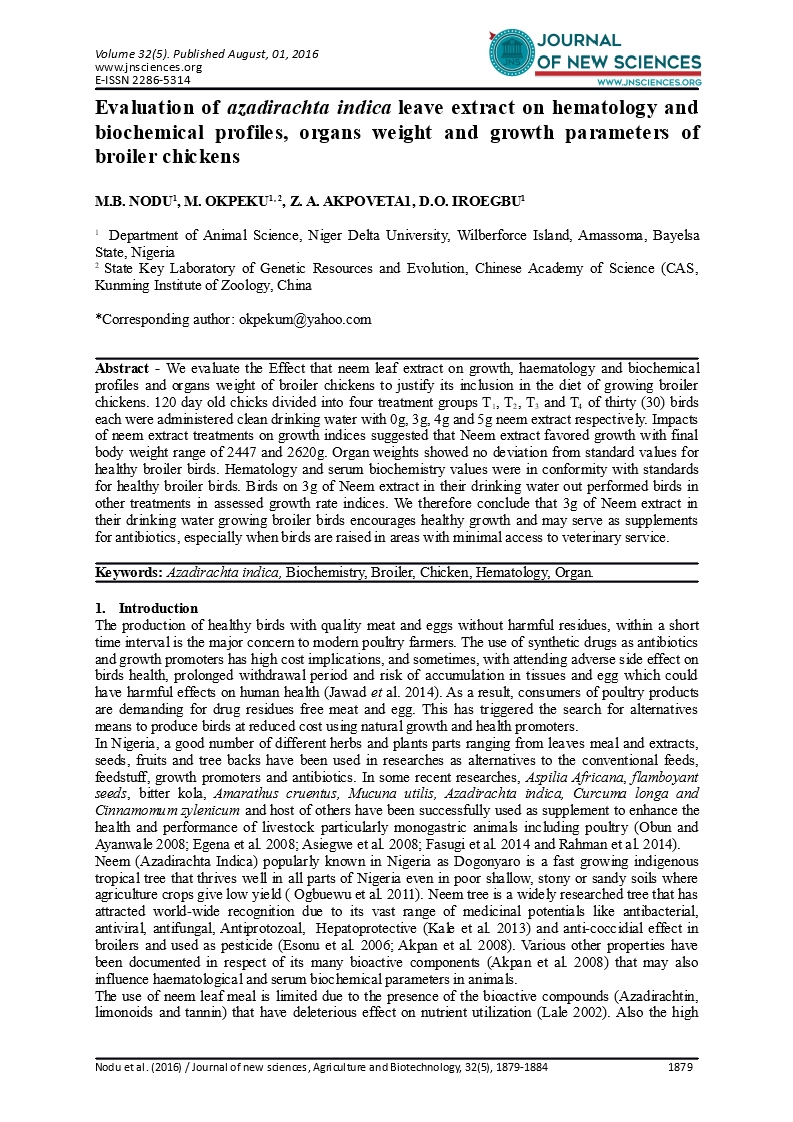A. MERIBAI1,2*
A. DIAFET1
A. BACHENE1
A. BAHLOUL1
M. OUARKOUB1
S. NAAMI1
A.A. MADACI1
A. BENSOLTANE 2
1 Characterization and Natural Resources Valorisation Laboratory (L.C.V.R) SNV-TU Faculty - Bordj Bou Arreridj University (34000) - Algeria.
2 Food and Industrial Microbiology Laboratory– Biological Sciences Faculty Oran1 University (31000) - Algeria.
Abstract - Streptococcus thermophilus is a homofermentative thermophilic lactic species, the most widely used in milk process and dairy technology, such as fermented milks, beverages, yoghurts and cheeses. It is the only urease positive, lactate and flavor compounds (acetaldehyde) production responsible. Acetaldehyde is the main aroma in yoghurts, produced from lactose, glucose, pyruvate converted from threonine and methionine. However, biosynthetic pathways and their regulation are not elucidated. By their resistance to bacteriophages attack, these species are used also in cheeses ripening. However, in all milk technological process, species are used only in mixed culture, associated with thermophilic lactic strain such as Lactobacillus bulgaricus, Lactobacillus helviticus and Bifidobacterium sp, where synergies phenomenon were observed, never in single culture. The study aimed to assess technological behavior of wild Streptococcus thermophilus strains isolated from Algerian raw milk in single culture. Strains belonging to Streptococcus thermophilus species were isolated, selected from Algerian raw milk using MRS and M17 medium, their technological skills of lactate and acetaldehyde production kinetics were explored. From all samples collected, three isolated lactic strains were selected as having unusual technological performance ST1, ST2 and ST3, milk acidification (ºD* Dornic degree) were respectively 70°D and 74°D and 69°D, flavoring power of reconstituted skim milk (in ppm: parts per million) was 0.09 ppm for ST1, 0.07 ppm for ST2, and 0.04 ppm for the strain ST3.
Keywords: Streptococcus thermophilus; Wild strains ; Selection ; Acetaldehyd ; Lacticacid
Résumé - Streptococcus thermophilus est l’une des espèces homofermentaires les plus utilisées en industrie laitière, comme starter des processus technologiques thermophiles dans la production des laits fermentés, boissons lactées acidifiées, yaourts et certains fromages à pâte dure. Elle est la seule espèce lactique thermophile, uréase positive, assurant l’acidification et l’aromatisation rapide du lait. L’acétaldéhyde, est l’arôme principal, responsable du goût caractéristique des yaourts, de certains laits fermentés et des fromages, produit à partir du lactose, du glucose et du pyruvate. Chez l’espèce S. thermophilus, l’acétaldéhyde est aussi produit à partir de la thréonine et de la méthionine. Les voies biochimiques de conversion enzymatiques des deux acides aminés et leur régulation sont peu élucidées, et sujets à des controverses. Ayant une résistance innée aux attaques des bactériophages, l’espèce S. thermophilus est utilisée dans la fabrication et la maturation des fromages à pâte cuite. Cependant, dans ces processus technologiques, l’espèce n’est utilisée qu’en culture mixte, jamais en culture pure, associée à d’autres espèces thermophiles à l’exemple de Lactobacillus bulgaricus, Lactobacillus helviticus et Bifidobacterium Sp où des phénomènes synergétiques sont observés. L’objectif de l’étude est l’exploration du comportement technologique, en culture pure, des souches (indigènes) de Streptococcus thermophilus, isolées, caractérisées et sélectionnées à partir du lait cru d’Algérie, leurs aptitudes technologiques d’acidification (production de lactate en ºD* :degré Dornic) et d’aromatisation (production d’acétaldéhyde en ppm* :partie par million) sur milieu restreint de fermentation; le lait écrémé est reconstitué à 10% W/V, à un intervalle d’incubation de 24h à 42 ºC, après une longue durée de cryoconservation. Les résultats ont donné trois souches (indigènes) sélectionnées, par leurs aptitudes d’aromatisation du lait écrémé reconstitué ST1: 0.09, ST2 : 0.07 et ST3 0.04 ppm d’acétaldéhyde. L’acidification par production du lactate en degrés Dornic (ºD) était de 70ºD (ST1), 74ºD (ST2) et 69ºD (ST3).
Mots clés: Streptococcus thermophilus, Sélection, Acétaldéhyde, Acidification, Aromatisation.
Read more
